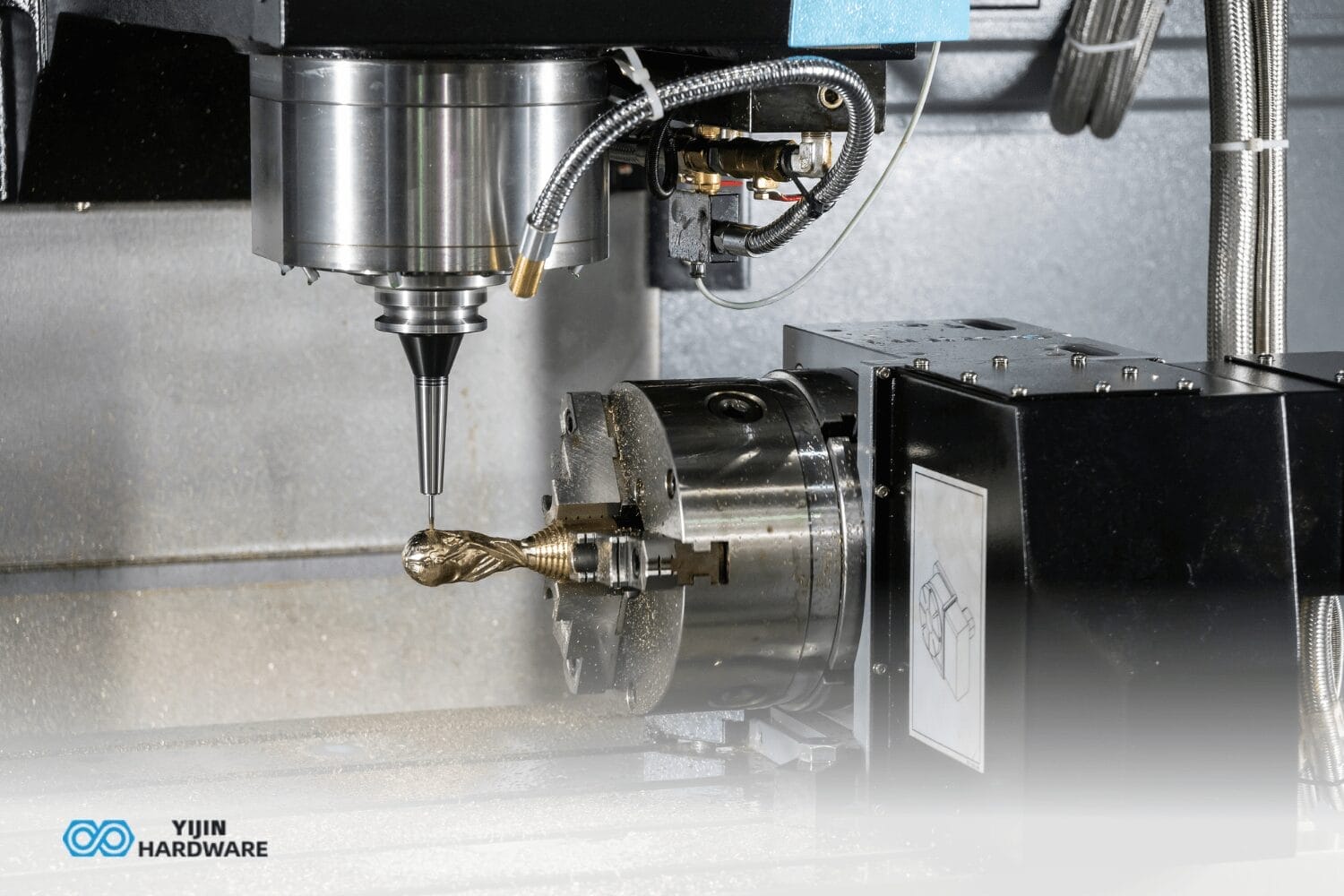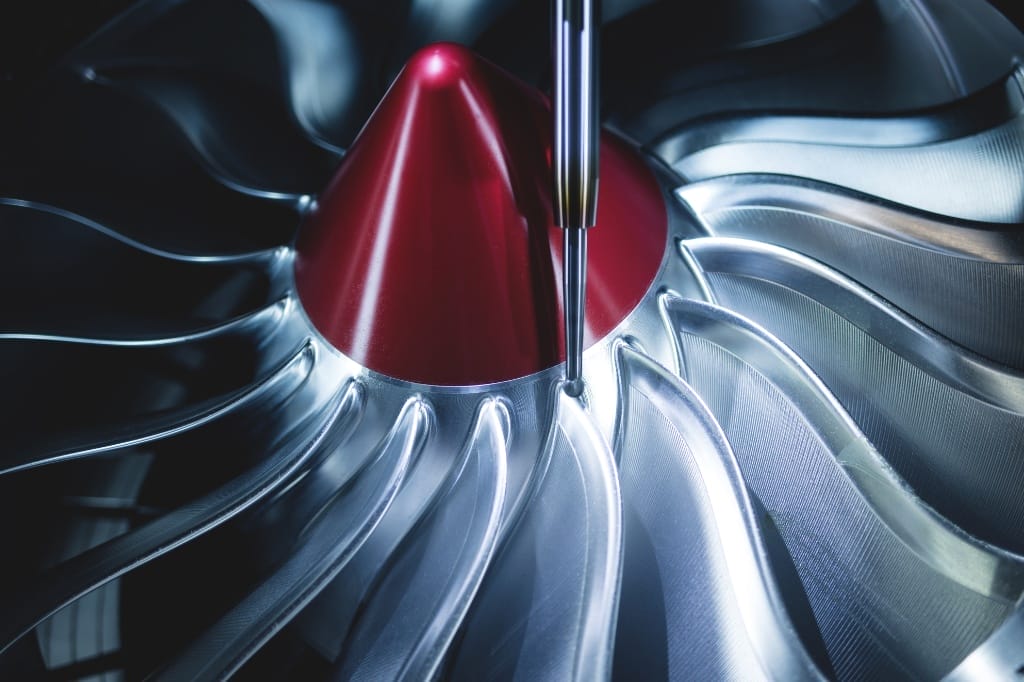What is prototyping, and how is it effective in CNC machining parts? More professionally, if we want to build any product, we make its prototype before going into mass production. These products can be anything from metal parts, airplanes, cars, toys, or electronic devices.
Let’s discuss it in simpler words. A prototype is a basic product version that assists designers or technicians in improving their design. If they find any issue, they can fix it before going into large-batch manufacturing. So in this context, rapid prototyping CNC also plays its part in prototype machined parts. Rapid CNC prototyping delivers the following advantages:
- Quicker Turnaround time
- Higher Fidelity
- High Precision
For a basic understanding for beginners, prototyping is the early stage of rough model production. It helps in testing the viability of a design or process. Prototype is a beginner step between your initial idea and the final product.
How can CNC machining help in prototyping?

As you can read a brief introduction on CNC machining in the link below, we shall provide a concise concept. CNC machining is a method to make high-precision parts. We use computer-controlled machines to remove material from a solid block in this type of machining method. Hence, these machines produce a precise prototype of your design.
The goal of CNC machined prototypes is to get your idea out of your head and into a physical form to:
Visualize the design:
How would it look like in the final production?
Test functionality:
Ensure different parts work together as planned in the design process.
Identify flaws:
Discover weaker areas before investing in mass production.
Read More:
CNC Machining Basics
What Is CNC Machining:From Basics To Advance
What is CNC Prototype Machining?
If you have seen a professional sculptor, what if he uses a CNC machine instead of traditional tools?
Here are three main stages of CNC machines that execute any prototype:
1: Part Design
2: CNC Machine Tools Setting
3: CNC part Manufacturing
So, let’s explain each briefly.
Part Design
Prototype CNC machining starts with the ideas for a part. Engineers and designers use CAD software to make a comprehensive digital model. They make sure about the minute details such as dimensions and tolerances. They also incorporate materials and turnaround time. This digital model plays a crucial role in determining the final manufacturing.
CNC Machine Tool Settings
As soon as we finalize the design, we will send it for CNC machining. This step involves using CAM software that effectively translates the CAD model into a CNC program. This software helps in generating toolpaths and cutting the following:
- The part’s geometry
- Tooling parameters
- Machining requirements.
At this stage, a professional CNC machining center will focus on choosing the right cutting tools, materials, and fixture methods. Subsequently, they also control machining parameters, for instance, cutting speeds and feed.
CNC Part Manufacturing
The next step is to load the CNC program into the machine’s control unit. Later, the operator sets up the workpiece on the CNC machine. The machine can be 3, 4, or 5-axis. Following the programmed toolpaths automatically, the CNC machine uses cutting tools to shape the workpiece according to the design. The machine adjusts cutting parameters automatically for greater precision during the entire process.
Read More:
Top 10 China CNC Machining Companies
Top 5-Axis CNC Machining Companies
Why Choose CNC Machining for Prototyping?

CNC machining is one of the prominent choices for making prototypes due to numerous critical advantages:
Greater Precision
CNC machining is quite popular due to its tight tolerance ability. Since it works on software, the cutting-edge technology of a CNC machine can effectively control the dimensions of prototype machined parts. This high level of accuracy makes the CNC machining method a prominent choice. Because making parts with complex geometry is highly convenient.
Rapid Prototyping
Time is everything in product development. Therefore, CNC machining is the best choice to accelerate part manufacturing. CNC machining is relatively faster than traditional machining methods. Thanks to its automated computer-controlled process, CNC is much quicker than manual machining. Rapid prototyping CNC is crucial when multiple prototype iterations are required for further design improvements.
Read More:
CNC Machining vs Manual Machining
Better Choice of Materials
CNC machining has the potential to machine several important materials. This includes metals like:
- Aluminum and steel: Aluminum is a popular choice for lightweight prototypes due to its excellent machinability and versatility. Collaborating with experts in CNC machining aluminum ensures precision and efficiency in creating high-quality components.
- Plastics: Plastics are frequently used for prototypes and low-weight applications. Leveraging specialized CNC machining for plastics ensures that even delicate materials are processed accurately without compromising their integrity.
- Titanium: Titanium stands out for its strength and corrosion resistance, making it ideal for advanced prototyping. Working with specialists in CNC machining titanium ensures that this challenging material is handled with the precision it demands.
Choosing the right material is important for guaranteed results at the prototyping stage.
Common CNC Prototyping Options
CNC machining comes with a range of different manufacturing processes which is suitable for making CNC-machined prototypes. Generally, there are three procedures we follow in CNC machining. Let’s discuss each:
Turning

CNC machining centers use a lathe to shape prototypes like metal and plastic in this method. Turning tools keep rotating the workpiece by removing the extra material following CNC prototypes. It is commonly used in manufacturing shafts, pins, and bushings. For businesses needing reliable solutions, partnering with a trusted turned parts manufacturer can ensure precise results for all turning requirements.
Milling

In this method, the machinist places the workpiece on the table, where the tools do the rest of the job. These tools can move in multiple directions, following the computer’s commands. This process helps them in making the desired shape. The flexibility of the tools makes milling a prominent choice for making CNC machined prototypes. If you’re looking for a dependable CNC milling service China, Yijin Hardware offers advanced milling solutions tailored to your specific needs.
Multi-Axis Machining

In multi-axis machining, the machinists use more than three axes. Multi axes allow machining centers to make prototypes with higher complex designs. This method also reduces the material waste. In more simple words this technique is like a sculptor with multiple hands working on different directions of the part.
Applications of CNC Prototype Machining
The unique capabilities of CNC machines make machining methods appealing. Therefore, in CNC rapid prototyping, hobbyists prefer to work with these methods because they can execute complex shapes flawlessly. Here are a few cnc application examples:
More Functional Prototypes
Incorporating CNC machines is about more than just prototyping. The sole purpose is to demonstrate the effectiveness of the prototype machined parts. For example, a prototype product can give us functional and design aspects. Hence, we can detect the flaws quickly which ultimately helps us to improve our design.
Aerospace

With the new developments in the aerospace industry, everyone is looking for more reliable and lightweight parts. With CNC machines, we can effectively use titanium and aluminum alloys to make prototypes.
Automotive

CNC machining is playing a decisive role in manufacturing automotive industry prototype parts. Since car engines demand higher accuracy; CNC machining can meet the tight tolerances effectively.
Medical Devices
Precision is everything in the medical industry. Therefore, CNC machining is here to make accurate prototypes for medical devices. Here again, materials like titanium and stainless steel enhance the productivity of the machining process.
Benefits of Prototyping with CNC Machining
Design Verification and Iteration
CNC-machined prototypes offer a solid space for hobbyists to make a perfect part before mass production. Prototyping a machined part allows you to check the design and make further improvements. Hence, you can make quick modifications.
Lower Investment
Since CNC machining is expensive, we cannot test the product in mass manufacturing. It will lead to greater upfront costs which can be discouraging for the buyer too. CNC prototyping provides both cost-effective and quick solutions to overcome these challenges.
Vast Material Compatibility
Making prototypes in CNC machining is easy due to an extensive range of material selection. This characteristic gives machining a significant advantage over other prototyping methods.
For example, unlike 3D printing, CNC can make prototypes with any plastic material. This quality allows designers to assess the prototype performance accurately. Moreover, it reduces the initial investment, too. The other factor is the evaluation of material behavior. Machinists can easily check:
- Tolerance
- Material machining capacity
- Possible surface finishing.
Limitations of CNC Prototyping
While CNC machining offers an impressive array of benefits for prototyping, it’s essential to acknowledge its limitations:
Material Waste
CNC machining is a subtractive manufacturing process. It means due to the limitations of the axis, there are higher chances of material waste. But modern CNC 5axis machines have solved this issue. Since it can work in multiple directions, the material waste is pretty low.
Cost per Unit
Although CNC machining produces accurate prototypes, its cost for precision is relatively high. For instance, single batches of prototypes can be much more expensive as compared to well-designed part mass production. The reason is the initial setting up cost of machines.
Key Considerations for CNC Prototyping
No doubt, CNC machining provides excellent capabilities but there are some considerations also. A machinist should undertake them before executing any prototype project.
Design Complexity
CNC machines are popular due to their efficiency in making perfect prototype parts for complex designs. However, if there are prototypes with complex designs, it can be challenging for CNC machines. Therefore, it is essential to consult with a professional CNC machining company.
Material Selection
Selecting the appropriate material is crucial to making a CNC machined prototype. CNC machining can handle a wide range of materials. For a beginner, some aspects need to be considered such as:
- Strength
- Weight
- Heat resistance
The same prototype cannot be used for all fields. We need to select materials according to industry requirements.
CNC Machining vs. 3D Printing
As we have discussed earlier CNC machining is a manufacturing process that can work swiftly on various materials with greater precision. However, it can be more expensive, especially for making prototypes. On the other side, 3D printing makes parts by adding layers gradually. You can say similar to a high-tech glue gun. Simultaneously, 3D printing is not only faster but also cheaper. It can effectively work on simple designs. However, CNC machining is a better choice for prototypes requiring metal strength.
| Factor | CNC Machining | 3D Printing |
|---|---|---|
| Precision | High | Moderate |
| Lead Time | Faster for simple designs, slower for complex geometries | Can be faster for simple designs |
| Material Options | Wide range of metals, plastics, and even wood | Primarily plastics, limited metal options |
CNC Machined Prototypes vs. Injection Molding Prototypes
Choosing the proper prototyping method is crucial for any end-product performance. Comparing both methods will allow you to assess their functions, strengths, and weaknesses. For instance, skilled technicians can evaluate the material limitations of both methods during testing. Ultimately, it will help for further product refinement.
| Feature | CNC Machined Prototypes | Injection Molding Prototypes |
|---|---|---|
| Production Volume | Low | High |
| Prototype Speed | Rapid | Faster (after mold creation) |
| Materials | Wider Selection (Metal, Plastics, Wood, and composites) | Primarily Plastics |
| Cost per Unit | High | Low (for mass production) |
To learn more about their differences, feel free to read our detailed guide: CNC Machining vs. Injection Molding
Yijin Hardware: Your Premium Partners for CNC Rapid Prototyping
Yijin Hardware offers full-range CNC prototyping solutions. Our seasoned team helps you convert your complex prototype designs into functional parts. From design to selecting the suitable material, we help you at every stage by incorporating state-of-the-art CNC machines.









